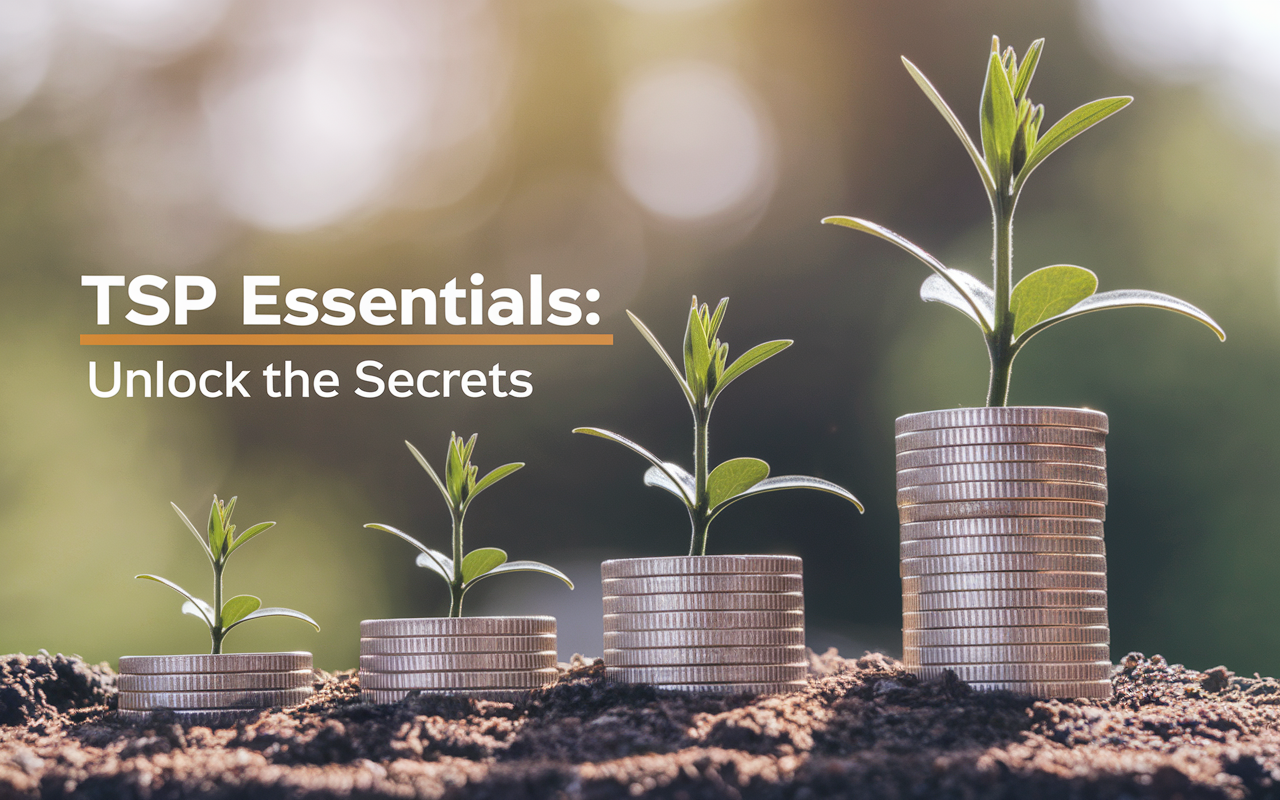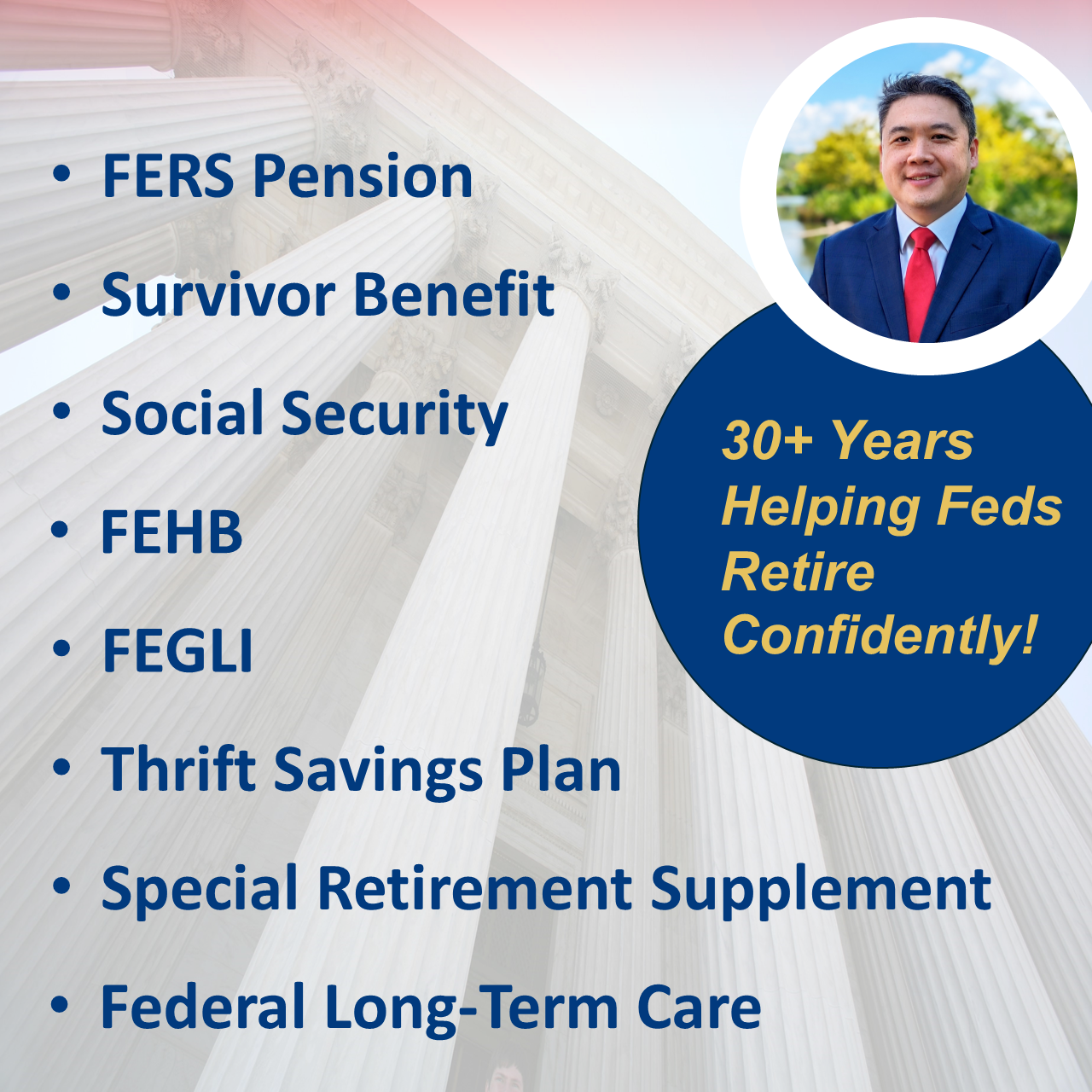TSP Essentials: Mastering Your Federal Retirement Account
For federal employees and uniformed service members, the Thrift Savings Plan (TSP) often becomes the cornerstone of a well-orchestrated retirement strategy. Beyond the familiar elements of government pensions and Social Security, the TSP grants you an opportunity to enhance your retirement savings. Yet, many people—especially those already 55 or older—wonder if it’s too late to optimize their approach. The good news: It’s never too late. By understanding your TSP inside and out, you can still take meaningful steps toward a confident retirement.
At PlanWell, our planners hold the Certified Financial Planner (CFP), Chartered Federal Employee Benefits Consultant (ChFEBC), and Accredited Investment Fiduciary (AIF) designations. We’ve spent over three decades helping federal and military employees navigate retirement. Our Fed-Expert Financial Blueprint was created to address unique federal benefits and ensure you have a clear path forward. Whether you’ve been contributing to the TSP for years or you’re just now catching up, let’s explore some effective ways to make the most of it.
Before we dive in, we invite you to sign up for one of our free Federal Retirement Planning Workshops. These sessions delve into the nuances of federal benefits, showing how your TSP fits alongside your FERS pension, Social Security, and other retirement assets.
TSP Basics: Key Features and Benefits
The Thrift Savings Plan (TSP) is the government’s answer to a 401(k)-style defined contribution plan. From a distance, it appears similar to private-sector retirement plans: you contribute a percentage of your salary, and you can pick from a range of investment funds. Yet, federal employees enjoy the added benefit of agency matching. If you’re a FERS employee, you receive a matching contribution of up to 5% when you contribute at least 5%. This matching can significantly accelerate your balance over time.
Contributions can be made on a traditional (pre-tax) or Roth (after-tax) basis, providing flexibility in how you manage your future taxation. In addition, all TSP participants have access to five main funds—G, F, C, S, and I—as well as L (Lifecycle) Funds, which automatically rebalance for you. For those seeking more variety, a Mutual Fund Window provides access to thousands of external funds (though this comes with higher fees).
Managing your TSP account is straightforward using the online portal on tsp.gov or through ThriftLine phone support. These tools help you track contributions, monitor performance, and keep tabs on how your chosen funds are faring. If you have questions about contribution strategies or selecting the right fund mix, it may be wise to speak to a federal employee financial advisor. And of course, you’re welcome to sign up for a free FERS webinar for a deeper dive into these details.
Projecting Long-Term TSP Growth
Because the TSP is a long-term investment vehicle, compound interest is your ally. You might hear the term “tsp growth calculator” or “tsp retirement calculator” tossed around. These handy tools can quickly show how small incremental changes—like increasing your contribution by one or two percent—can have a substantial impact by the time you retire.
Historically, the TSP’s stock-oriented funds, especially the C Fund, have averaged annual returns of varying percentages. The I Fund is slightly lower at different averages, reflecting international equity performance, while the G and F Funds (treasury and bond-focused) vary based on interest rates. Although past performance never guarantees future results, these figures help you see the relative growth potential of each fund.
The difference that contributions—and time—can make becomes more evident when looking at numbers. Consider the scenarios below, which assume a 6% annual return.
| Annual Salary | Contribution % | Agency Match % | Total Yearly Contribution | Estimated 6% Growth (Over 30 Years) |
|---|---|---|---|---|
| $100,000 | 10% | 5% | $15,000 | Potentially Exceeds $1 Million |
| $50,000 | 10% | 5% | $7,500 | Approaches $500,000 – $600,000 |
Both scenarios can get you well on your way toward a comfortable retirement. While a six-figure salary clearly contributes more in absolute terms, consistent investing at lower income levels can still build significant nest eggs, especially when you factor in matching contributions. Time in the market matters far more than timing the market. Contributing steadily over 20 to 30 years provides the benefits of compounding, allowing your money to work on your behalf.
Building a Long-Term Portfolio
A sound TSP strategy typically revolves around understanding which funds meet your risk tolerance and retirement timeline. The Lifecycle Funds (L Funds) let you invest in a pre-packaged mix that automatically becomes more conservative as you near your target date. If you prefer taking the reins, you can independently allocate among the core funds—G, F, C, S, and I. A portion of participants also choose a contrarian or more active approach, shifting allocations based on market conditions. Active adjustments can feel tempting in volatile markets, but it often requires a deep understanding of market cycles to be beneficial.
For many federal employees, a well-diversified buy-and-hold strategy offers a balanced blend of growth and stability. Even small rebalancing moves—perhaps once or twice a year—can keep your portfolio aligned with your goals without turning your TSP into a day-trading account. The TSP’s Mutual Fund Window can add further diversification beyond the standard funds, but those options come with additional fees and oversight. If you’re curious to see what advanced diversification might do for your TSP plan, it’s often helpful to get customized guidance from a professional.
Fine-Tuning Your TSP Contributions
One of the simplest and best-known tactics is to ensure you’re contributing at least 5% of your salary, which triggers the full agency match. Anything less means leaving matching funds on the table. Beyond that, you might consider increasing your contributions to reach the annual IRS limit for TSP contributions. This limit can change each year, so checking the current threshold can help you plan your monthly deferrals.
In addition to targeting the right contribution level, make sure your allocation suits your time horizon and tolerance for market fluctuations. If you’re in your early fifties, you might still be comfortable leaning somewhat into stock funds to capture higher growth. If you’re five years out from retirement, then more conservative allocations might be reasonable. Either way, the point is to align your TSP balance with when you plan to tap it. For mid- to late-career folks, regularly reviewing your TSP—annually, or when major life changes occur—keeps you on track. And if you want a more in-depth look at how these factors come together, you’re welcome to attend our free Federal Retirement Planning Workshop for detailed insights.
Navigating the Best TSP Calculator Tools
So, how do you turn these concepts into your personal plan? This is where tools like the “tsp growth calculator,” the “tsp retirement calculator,” and some of today’s “best tsp calculator” options come into play. While the TSP website offers a straightforward calculator, external calculators can allow for more variables, including inflation assumptions, anticipated raises, and certain tax scenarios. You can also explore a more robust Thrift Savings Plan Calculator to help chart a path personalized to your situation.
When you use these tools, pay close attention to inputs such as your current age, planned retirement age, contribution rate, agency match, assumed annual return, and current TSP balance. The outputs can shift dramatically with even slight changes to any of these variables. The sample table below makes that point clear by varying contribution percentages, ages, and assumed returns.
| Age at Start | Planned Retirement Age | Annual Salary | Contribution % | Agency Match % | Estimated Annual Return | Final TSP Balance (Approx.) |
|---|---|---|---|---|---|---|
| 35 | 60 | $100,000 | 10% | 5% | 6% | $1.2M+ |
| 50 | 65 | $120,000 | 15% | 5% | 6% | $750K – $900K |
These examples are hypothetical, but they illustrate how pushing your annual retirement contributions even a few percentage points higher can produce significant benefits given enough time. It also shows how you can potentially play “catch-up” if you’re starting later, provided you increase your savings rate. And don’t forget that if you’re age 50 or older, additional “catch-up contributions” are an option—one more opportunity to bulk up your TSP nest egg in those final working years.
The Impact of Savings Rate and Early Contributions
Starting early offers the biggest edge: each dollar you invest in your 30s and 40s has decades to compound before you tap it in retirement. However, if you’re already in your 50s, there’s still room for growth. Even a five-to-ten-year timeframe can see measurable increases in your TSP balance just by adjusting your contribution levels.
Even if you can’t immediately jump to the IRS maximum, consider periodically boosting your contribution rate. You might, for instance, set a personal goal of adding 1% more each year until you reach a target rate like 12% or 15%. As your salary hopefully rises, you may not even feel the pinch in your monthly budget—yet you’re setting yourself up for stronger growth by retirement.
Mistakes That Can Derail Your TSP Growth
Two of the biggest pitfalls are undercontribution and emotional investing. Federal employees sometimes assume their pension and Social Security alone will be enough. In reality, many retirees could use more savings to preserve a comfortable lifestyle. That’s why not hitting the 5% minimum for the full agency match is such a missed opportunity—even if you’re hitting a pension threshold, you’re effectively walking away from contributions if your TSP is underfunded.
Emotional investing often creeps in when markets are down. If you shift your TSP allocation from stock funds into the G Fund—or pull out altogether—during a downturn, you risk missing the eventual rebound. Market timing is notoriously tricky, and missing just a handful of the market’s best days can mean substantially lower returns over time. A balanced approach, fueled by your personal comfort with risk, is typically more effective than reacting to short-term market swings.
Finally, overlooking or neglecting your fund allocations is another common error. Sometimes participants leave all their money in the G Fund for years, or they invest exclusively in the C Fund without considering diversification. A quick annual review goes a long way toward correcting any imbalances in your strategy. For even more insights, take a look at how you can avoid common TSP misconceptions and mistakes.
Conclusion and Key Takeaways
The Thrift Savings Plan plays a vital part in building a comfortable retirement for federal employees and service members. By understanding the strengths and limitations of each fund, regularly fine-tuning your contribution rate, and reviewing diversification options that match your evolving goals, you can unlock growth potential.
- Early and consistent contributions lay the foundation for compound growth.
- Leverage TSP calculators to project different scenarios and gauge savings targets.
- Choose a fund strategy—be it a Lifecycle Fund or a custom mix—that aligns with your risk tolerance and retirement timeline.
- Keep an eye out for pitfalls like emotional investing or missing out on agency matches.
With the right guidance and proper planning, your TSP can support a retirement you’ve envisioned. Our team at PlanWell stands ready to assist you in harmonizing your TSP strategy with your pensions, Social Security, and overall financial objectives. If you’d like further clarification or a tailored analysis of your situation, we encourage you to sign up for one of our free Federal Retirement Planning Workshops. Every day, we help dedicated federal employees optimize their TSP through our Fed-Expert Financial Blueprint, and we’re here to do the same for you.










